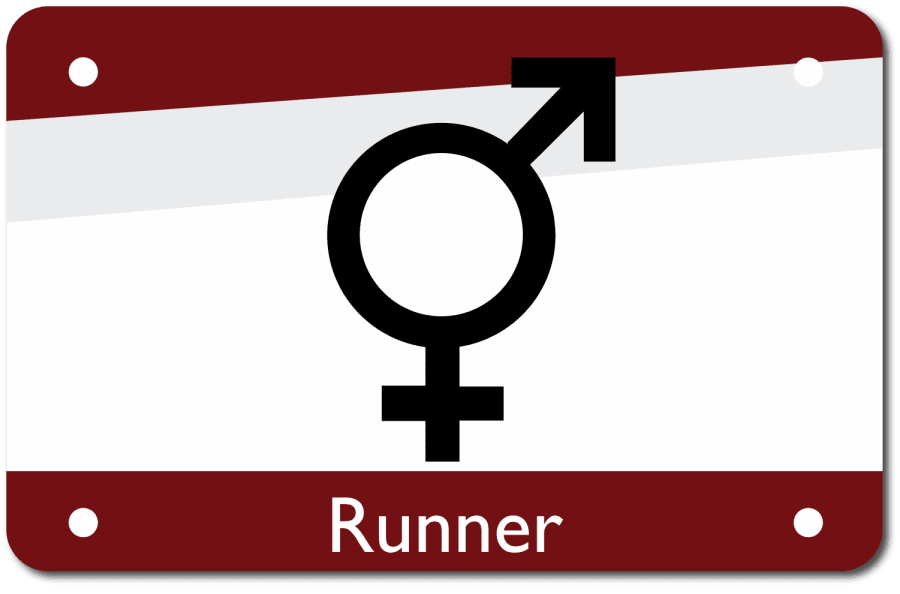IAAF changes the regulations for female intersex athletes
The rules regarding participation for athletes with abnormal hormone production changed as of last month, bringing a huge loss to female intersex athletes who produce more testosterone than their peers.
According to the International Association of Athletics Foundation (IAAF), the new regulations would stop female athletes who have hyperandrogenism, a medical condition where people with female genitalia produce a higher amount of male sex hormones, from competing in events from 400 meters to a mile unless they take a hormonal contraceptive like birth control to lower their blood testosterone level.
“Our new regulations are based on a range of published research, expert review and most importantly, evidence collected over 15 years,” said Yannis Nikolaou, the communications manager for IAAF. “… We have pointed to as wide a range of evidence as we are able to and will continue to gather and analyze evidence for other distances as well as jumps and throws.”
However, opponents of the new regulations have said that they are unfair and discriminatory. Groups such as interACT, a youth intersex advocacy group, believe that it is both harmful to the intersex community and creates a barrier that doesn’t properly allow for intersex people to identify as the sex that they wish to.
“The IAAF ruling on testosterone levels is unfair to anyone with a variation in the amount of sex hormones produced,” said Marissa Adams, an intersex woman and a member of interACT. “It reinforces the idea that to be a woman you have to be a very specific way, which now apparently includes testosterone level checks for certain athletes.”
Many fans also voiced opposition to the IAAF’s decision by saying it was harmful to accomplished athletes such as Caster Semenya, an intersex woman who has won two Olympic gold medals for South Africa in the 800 meter race. The new regulations would affect Semenya, since her hormone levels and desired distance fall within the restricted events.
Chris Mosier, a transgender athlete and advocate for gender and sex issues within the athletic community, said that the new regulations are “specifically selected to end the career of one amazing athlete.”
Before, the IAAF allowed testosterone levels in female athletes to be 10 nanomoles per liter of blood. The new rule, which goes into place Nov. 1, will restrict that number to just 5 nanomoles, according to a statement issued on April 26.
According to a recent study released by the IAAF, the difference between female athletes with higher testosterone levels were 2.73 percent for 400 meter dash, 2.78 percent for 400 meter hurdles, and 1.78 percent for 800 meter dash. The study has been criticized for its outcomes by a number of intersex advocates, and Mosier says that an athlete’s hormone levels have nothing to do with the outcomes of their accomplishments.
“Elite performance cannot simply be boiled down to testosterone levels,” he said. “Training and dedication, access to good coaches, appropriate nutrition, recovery tools and equipment make significant differences in performance outcomes.”
The IAAF has said that it used a number of studies to make the decision and not the controversial one it quoted in its April press release, saying that they “are unable to share (the studies) publicly due to confidentiality.” But Nikolaou maintains that “elevated testosterone levels give athletes the biggest performance advantage in the events from 400 meters to one mile.”
The rules come during a time when the IAAF is struggling to make competitions as fair as possible, in an age where many athletes no longer identify as “male” and “female.”
The organization has previously tried to put prior restrictions on female intersex athletes. In 2015, the Court for Arbitration in Sport struck down the previous regulation to restrict women with higher testosterone counts due to the IAAF not providing substantial evidence that they were at an inherent advantage. The organization had two years to provide data that backed up their claims, in which time produced the study cited in their earlier press release.
While Semenya is the most prominent female intersex athlete, more women in a variety of competitions are believed to also have hyperandrogenism. This could lead to many female competitors looking for alternative routes, such as taking birth control, to regulate their testosterone levels before the Nov. 1 deadline hits.
Regardless of the study, many fans are still upset, and they continue to believe that the decision is harmful and discriminatory for women with higher testosterone levels within the athletic world.
“I truly believe this new policy is specific to Caster Semenya, and is fueled by racism and unfair expectations of gender expression for female athletes,” Mosier said. “The message is clear: Female athletes can be strong, but not too strong.”





